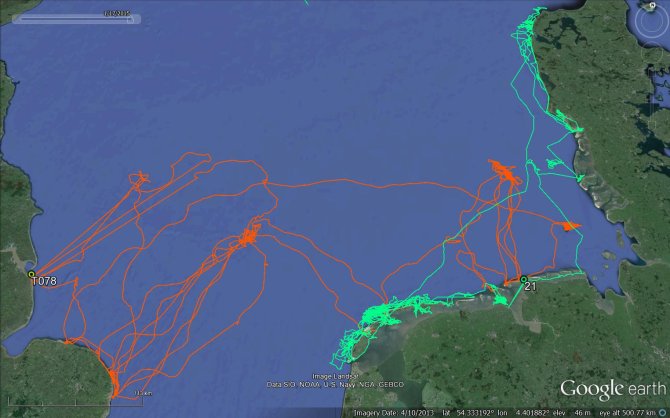
Service
Tracking seals at sea with transmitters (telemetry)
Seals spend 70% of their time in the water. They search for food and use the water to migrate to other locations. Harbour seals even mate in the water! Yet, for a long time it was unclear how seals use their habitat. Important feeding grounds were unknown and it was not clear which distances they covered. With the help of telemetry (transmitters) it is possible to follow the animals at sea.
The transmitters used by the scientists from Wageningen Marine Research register the geographical position and diving depth and regularly transmit all the data collected. This makes it possible to record individual behaviour and the use of space.
The transmitters are temporarily glued to the seal's fur. From that moment on, the individual can be followed for a number of months. Whenever the animal is close to land, the stored information on location and depth is sent via the GSM network. The transmitters fall off during the annual moult. Depending on when the transmitter is attached, it stays on the animal for several months. Using this technique, the researchers showed that harbour seals and grey seals can travel long distances to forage or swim to another area.

Habitat preference models
Scientists from Wageningen Marine Research have developed models to calculate where seals at sea are most often found. To do this, they use the information on the numbers of seals present at the resting places in the Wadden Sea and Delta. The telemetry data shows the preferred depth and type of bottom of the seals and how far the animals swim from their haunts. In this way, important foraging areas of seals in the North Sea can be identified.
Applications
Transmitter research is suitable for measuring how seals disperse and what their behaviour is in response to the construction of, for example, offshore wind turbines, port expansions and other human interventions. The technique is also suitable for gathering basic knowledge on seal movements and behaviour. For each application, we thoroughly assess whether the research is necessary.
Quality assurance
Scientists from Wageningen Marine Research combine sound knowledge of seal ecology with knowledge of transmitter technology, fieldwork methods, data processing and analysis and interpretation. We have more than 20 years of experience with seal caging in various projects and have described this in scientific publications. We have developed and refined standards over the last decades. All experiments are reviewed by the DEC (Animal Experiments Committee). Furthermore, we manage all the telemetry data of seals tagged in the Netherlands.